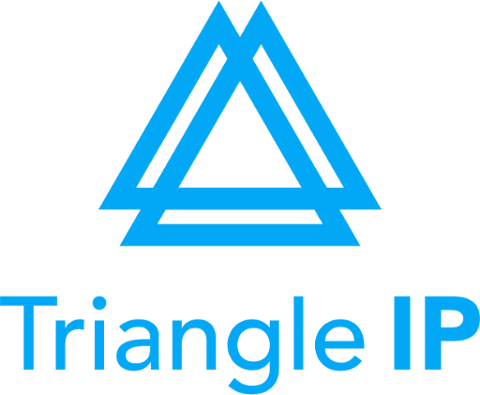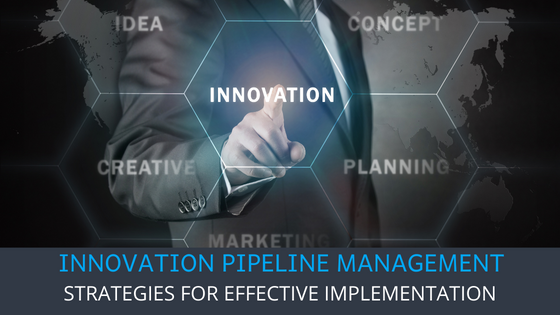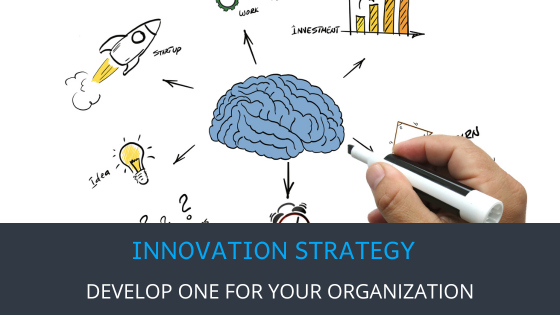Innovation is a double-edged sword for business leaders: it’s both a top priority and a major challenge. Surprisingly, 70% to 90% of innovations don’t hit the mark.
What’s the secret to success for the rest?
Innovations that align with a company’s mission and benefit everyone involved – from customers to investors.
Google, with their “20% time” for brainstorming, Procter & Gamble’s meticulous idea evaluation process, Apple’s teamwork-driven innovation, and Amazon’s obsession with customer needs all nail this approach to systematic innovation pipeline management, ensuring a constant flow of fresh ideas and products.
However, there’s no one-size-fits-all in innovation.
The success lies in aligning your innovations with your business strategy, smartly allocating resources, managing risks, getting to market faster, meeting market demands, and keeping your team on board and excited.
This article throws light on how to best manage your innovation pipeline, from brainstorming to rollout, and introduces the TIP Tool™ – a game-changer in managing this process.
What is an Innovation Pipeline
A business’s success relies on a well-managed “Innovation Pipeline,” a concept that encapsulates the journey of ideas from inception to market.
Described in “Innovation Pipeline Management: Lessons Learned from the Federal Government and Private Sector,” this structured approach includes inputs, processes, and outputs, guiding organizations to develop and implement new ideas, products, services, or processes.
Effective management of the innovation pipeline is vital for identifying exceptional ideas, executing them, and swiftly introducing them to the market.
The 5i framework breaks down the innovation pipeline into five key stages.
- Ideation: Brainstorm and research to generate viable ideas.
- Invention: Turn ideas into tangible concepts through analysis, experimentation, and refinement.
- Initiation: Develop a minimum viable product (MVP) for testing, involving modeling and prototyping.
- Incubation: Transition projects to market-readiness using research, trials, and business plan adjustments.
- Introduction: Successfully launch the product, focusing on market and user acceptance.
Source – 5I Innovation Pipeline
Each stage is integral and deserves equal attention to ensure the pipeline’s effectiveness.
However, it’s not just about progressing through these stages. The innovation pipeline should be integrated with the company’s innovation strategy to maximize growth.
While 84% of CEOs believe innovation is the key to growth, many don’t prioritize patent protection, which could offer a potential competitive advantage. Hence, it’s imperative to run a strategic IP(Intellectual Property) creation track alongside the innovation pipeline.
#1 – Ideation – Capturing Innovation Enterprise-Wide
Steve Stoute’s statement, “Great ideas can come from anywhere. There are no titles around an idea,” perfectly aligns with the creation of Sony’s PlayStation.
This innovation wasn’t the product of their R&D department but rather the vision of Ken Kutaragi, a junior staffer. Sony, initially hesitant due to its inexperience in gaming, was eventually swayed by Kutaragi’s determination, leading to a landmark partnership with Nintendo.
The PlayStation’s origin underscores the importance of capturing innovation across the enterprise. Well-curated innovation capture programs designed to incentivize innovators with recognition and rewards go a long way here.
These programs are intended to nurture and direct creative thinking, generate new solutions to problems, and uncover potential products, services, or processes.
Many enterprises have embraced employee innovation programs to cultivate a culture of innovation and provide staff with resources for their ideas. Some notable innovation programs include:
- Adobe Kickbox: Adobe’s ‘Kickbox’ innovation program equips its employees with a toolkit to pitch new business ideas to stakeholders.
- InGenius: Nestle’s ‘InGenius‘ program allows employees to propose ideas, which are evaluated by subject matter experts.
- WeSolve: Bayer’s ‘WeSolve’ platform employs coaches and ambassadors to educate and support employees in innovation. Bayer has also allocated 50,000 euros to support the program financially.
- Ritz-Carlton: Ritz-Carlton hosts an annual Innovation Olympics, where employees compete to present the best innovative idea implemented company-wide.
In addition to innovation capture programs, consider implementing the following strategies to maintain a steady flow of ideas:
- Culture Transformation and Awareness Building: Regular training sessions for inventors and IP teams can increase awareness about the benefits of invention capture.
- Incentives and Acknowledgment: Motivate innovators with perks like bonuses, shoutouts, and spotlights in company newsletters. Add Patent Incentive programs to the mix to encourage employees and inventors to share and patent their creations, enhancing the company’s intellectual property portfolio.
- Tools for Capturing Ideas: Use suggestion boxes, homegrown tools, or even better, use digital platforms like the TIP Tool™, which can help simplify the capture process.
Learn more about the benefits of idea management software here.
The TIP Tool™ provides you with an Idea Capture Form that includes:
- Invention Disclosure Form(IDF), designed to maximize engagement from innovators
- Straightforward information request
- Allow document attachment – for detailed idea representation.
- Versatile – Offline use is available in Word and Excel.
- Filled forms can be uploaded back into the tool.
- Customizable to fit enterprise-specific needs.
It’s important to involve innovators in the patent process and nurture a culture of innovation if you want to capture and protect your enterprise’s innovations.
#2 – Invention – Vetting Processes for Innovation
Every idea has value, and it’s crucial to explore each one. As an innovation manager, you constantly weigh possibilities by asking, “Should we select this idea?” After all, not all innovation progresses beyond the brainstorming phase.
The vetting stage acts as a comprehensive checkpoint encompassing multiple steps enterprises employ to streamline the selection of ideas to be executed and given patent protection.
Stages of the Vetting Process
- Idea Generation and Initial Screening: It’s crucial to encourage an environment where creativity is uninhibited. This is a preliminary filter to ensure resources are not expended on flawed concepts.
- In-depth Analysis: This stage involves detailed market research, technical feasibility studies, and initial financial assessments.
- Prototype Development and Testing: For ideas that show promise, a prototype or a minimal viable product is developed.
- Final Evaluation and Approval: This is the culmination of the vetting process. The idea, now in its most concrete form, is subjected to a final evaluation.
The vetting process is the first step toward evaluating ideas. It includes ensuring that they align with strategic goals and assessing their feasibility.
There are various ways to evaluate ideas based on your business objectives. One of these methods is the NABC approach to idea evaluation, which venture capitalists use.
This systematic process involves four critical components that are assessed to determine the viability of business ideas.
- Need: Identifying the critical needs of the target group through observation, surveys, interviews, and user tests.
- Approach: Defining the project focus, solution, and process in relation to the target group’s needs, emphasizing unique aspects of the idea.
- Benefits: Describing the positive effects and specific benefits of the project for users and clients, focusing on the uniqueness and competitive advantage.
- Competition: Evaluating the idea’s advantages and distinctiveness compared to existing competitors.
This approach involves all key decision-makers and emphasizes unrestricted creativity, quantity of ideas over quality, and avoiding negativity in the idea generation phase.
Developing a manual system to sift through ideas, giving them the green light or the red flag, eats up precious time and requires a workforce. That’s where the TIP Tool™ steps in, making the vetting process a cakewalk.
It promotes real-time collaboration, streamlining idea evaluation for cost-effectiveness, patentability, market needs, feasibility, etc., ensuring their alignment with broad business goals.
The best part is that the tool’s interface for recording brainstorming over an idea is akin to Google Docs, keeping innovators, business teams, and patent attorneys consistently aligned and updated.
The essence of a successful vetting process lies in its ability to balance the scales of creativity and practicality.
Let’s take an example of how 3M’s strategy for picking winning ideas is rooted in its culture of constant innovation.
- Innovation Hubs: These spaces brew up fresh, practical ideas. Scientists hit the field to get real-world insights, and customers come in to brainstorm. It’s a melting pot of thoughts from the team and the public.
- The 15% Rule: Since 1948, employees have dedicated 15% of their work time to brainstorming. Iconic products like the Post-It notes came out of this creative freedom.
- The 30/4 Speed Rule: To keep things moving, 3M aims for 30% of profits from products launched in the past four years. This keeps the innovation pedal to the metal.
- Big on R&D: 3M pours over $1 billion into research and development yearly, about 6% of its sales. This heavy investment is well above the norm and fuels their product innovation engine.
Collectively, these strategies contribute to 3M’s reputation as a powerhouse in innovation and product development.
#3 – Initiation – From Idea to Implementation
The journey from a mere concept to a market-ready product or service is an intricate and varied adventure.
This transformative process is not just about having a groundbreaking idea; it’s about meticulously nurturing and developing that idea through a series of well-defined steps, ensuring its viability and market success.
Steps to Transform an Idea into a Viable Product or Service
- Idea Generation: It all starts with an idea, often born from identifying a gap in the market or a personal need.
- Feasibility Study: Assessing the idea’s practicality in terms of market needs, resources, and technological capabilities.
- Prototyping: Creating a prototype is a tangible step towards bringing an idea to life, allowing for testing and refinement.
- Market Testing: This involves getting feedback from potential users to understand the market’s response to the product.
- Iterative Development: Based on feedback, the product undergoes several iterations to improve its design, functionality, and user experience.
- Continuous Improvement: Post-launch, the product continuously improves based on user feedback and market trends.
Case Study: Dyson’s Vacuum Cleaners
To illustrate these steps, consider James Dyson’s journey. Frustrated by the inefficiency of traditional vacuum cleaners, Dyson embarked on a path of innovation.
After developing over 5,000 prototypes over five years, he introduced the G-Force cleaner, featuring groundbreaking cyclonic separation technology.
Despite initial market rejection, Dyson’s persistence paid off, and his vacuum cleaners eventually revolutionized the home appliance market.
James Dyson’s success with his revolutionary vacuum cleaners underscores the value of not only innovation but also the protection of these ideas. His story exemplifies why safeguarding inventions through patents is essential.
The TIP Tool™ embodies this principle by streamlining the patent acquisition process.
It offers actionable insights by harnessing data from millions of patent applications, like patentability score, expected allowance time, end-to-end patenting cost estimations, etc., which are crucial for shaping an effective patent prosecution strategy.
Moreover, it seamlessly integrates with the USPTO, offering instant updates and case tracking. This, in turn reduces your reliance on outside IP counsel.
This wealth of information positions the TIP Tool™ as an invaluable asset in navigating the complexities of patent management.
#4 – Incubation – Refining and Developing the Proposition
The incubation stage is where your project, be it a product, process, or business model, transitions from technically viable to commercially ready. It’s an intense, multi-step process that’s crucial for success.
- Market Research: Dive deep into the market to identify potential customers, understand their needs, and size up the competition. The aim is to confirm there’s a real demand for innovation and hone in on the ideal customer base.
- Staging Trials: After you’ve assessed the market, it’s time to test it. Try out your prototypes in controlled settings or with a small, select user group. This stage is all about spotting those early glitches and getting a genuine feel for your innovation’s performance.
Consider how Google approaches this. They often introduce beta versions to a limited audience first. Remember Gmail’s five-year beta phase? This allowed Google to refine and perfect based on real user feedback.
- Gathering Lead Customer Feedback: Engage with early adopters to get their take. Their insights can spotlight what’s working, what’s not, and how to make the innovation even better. It’s all about tuning into the feedback of those who’ll benefit most.
- Adapting the Proposition: Armed with fresh insights, it’s time to adjust. Maybe that means tweaking features, a redesign, or even a complete pivot. The aim? To better meet market needs. Just look at Netflix’s shift from DVDs to streaming. This pivot was a game-changer.
- Fine Tuning the Business Plan: Update the business plan to reflect the refined proposition. Detail the strategy for hitting the market, setting the right price, choosing sales channels, and projecting finances. A solid plan is crucial for drawing in investors and partners.
- Preparing for Scale: Think ahead about scaling up. Outline the logistics for manufacturing, distribution, marketing, and customer service.
The incubation stage is about refining and adjusting, setting the stage for a successful launch. If your proposition resonates and shows commercial promise, it’s ready to progress to the Introduction stage and make its market debut.
During this stage, it’s especially advisable for innovation managers to hang out with the innovators to identify patentable innovations, as innovators might undermine the IP potential of an idea.
#5 – Introduction – Market Venturing
Whether your enterprise decides to roll out a new internal process or unveil a product to the world, your aim is to secure the perfect launch spot and captivate your audience. It’s not just about entering the market; it’s about making a significant impact and demonstrating your idea’s viability.
As you transition from launch preparation to ongoing management, it’s helpful to remember that launching is just the beginning.
Now’s the time to closely monitor how your innovation pipeline performs and actively refine your approach. You’re not just aiming for a successful launch; you’re ensuring your innovation pipeline truly takes off and continues to ascend.
Measuring and Managing Innovation Pipeline Performance
Innovation is crucial for 79% of companies, yet it’s challenging for many C-suite executives to align these projects with their daily tasks.
Bridging this gap requires effective innovation pipeline management. Key to this management strategy is the strategic use of key performance indicators (KPIs). These KPIs act as guides, ensuring innovation aligns with both the daily grind and long-term goals.
Here’s a quick rundown of the essential KPIs across different categories:
- Innovation Efficiency Metrics, like Idea Generation Rate and Time to Market, assess process speed and efficiency.
- Innovation Effectiveness Metrics, examining outcomes such as the Idea-to-Launch Success Rate and Failure Rates.
- Financial Impact Metrics, like Innovation ROI and R&D Spending as a Percentage of Sales, evaluate economic benefits.
- Intellectual Property Metrics, tracking new idea output and protection.
- Market and Customer Response Metrics, providing customer and market feedback.
- Employee Engagement and Culture Metrics show internal innovation involvement.
- Portfolio and Risk Management Metrics, balancing risk and opportunity in the innovation pipeline.
Managing these KPIs can be challenging. Here, tools like the TIP Tool™ become invaluable, particularly for IP-related metrics.
Tailored for enterprises, this tool provides a straightforward dashboard for R&D teams to track key innovation metrics easily.
A few clicks on the TIP Tool™ streamlines innovation management, aiding businesses in strategic decision-making for maximum impact and growth.
Overcoming Common Challenges in Innovation Pipeline Management
Innovation ranks high on the priority list for over 80% of executives, but fewer than 10% express satisfaction with their company’s innovation results.
It’s vital to have an effective innovation pipeline that ignites, evaluates, and introduces new ideas. Yet, this pipeline frequently presents numerous challenges.
Here are some common issues and their solutions.
1. Resource Allocation
Efficiently distributing resources like time, money, and staff between innovation projects and day-to-day operations is crucial.
Key strategies include prioritizing projects, managing resources flexibly, and forming cross-functional teams to optimize resource use.
2. Maintaining Momentum
It’s essential to propel the innovation process from brainstorming to execution without hitting the brakes.
To prevent this, setting clear milestones and deadlines, conducting regular progress checks, and motivating employees through engagement and incentives are effective approaches.
3. Aligning with Business Strategy
Aligning innovation with a company’s overall strategic goals is crucial to preventing wasted resources and maintaining the brand’s impact.
This importance is highlighted by a PwC study, which revealed that 77% of successful innovators align their innovation strategies closely with their business strategies.
Understand barriers, cultivate a culture of innovation, develop a diverse team, and measure success. Draw insights from triumphs and setbacks to propel organizational growth.
How the TIP Tool™ Can Be Instrumental in Innovation Pipeline Management?
Digital tools and platforms have emerged as game-changers in this regard, revolutionizing how organizations foster innovation.
Enter the TIP Tool™, a cutting-edge solution to elevate your innovation pipeline management.
Triangle IP, a frontrunner in patent management software, presents the TIP Tool™ as a user-friendly, drag-and-drop application that streamlines the capture of innovation across your entire enterprise while effectively managing the patent lifecycle.
Source – Triangle IP
Here’s a glimpse of what this innovative tool can do for your organization:
- Patent Pipeline Management: Streamlines identification of bottlenecks, fine-tuning your patent prosecution strategy.
- Invention Disclosure Forms: User-friendly forms designed to encourage engagement in your company’s innovation and patent incentive program.
- Real-Time Collaboration: Similar to Google Docs, this feature unites innovators, patent attorneys, and business teams for enhanced teamwork.
- Role-Based Dashboards: Provides customized access to intellectual property (IP) information and ideas tailored to different user roles.
- Case Analytics: Delivers insights on the likelihood of patent approval.
- Cost Predictions: Offers foresight into the long-term costs associated with patenting.
- Automatic USPTO Updates: Keeps you informed, saving valuable attorney hours and reducing overhead.
The TIP Tool™ transforms how your team innovates. Give them a clear view of the impact of their ideas, boosting an innovation-focused culture.
Ready for a change? Try TIP Tool™ for free and see the tech-driven difference in your organization’s innovation journey.
For a comparison of other enterprise innovation tools available today, check the blog on 5 Top Enterprise Innovation Software to Checkout in 2025





